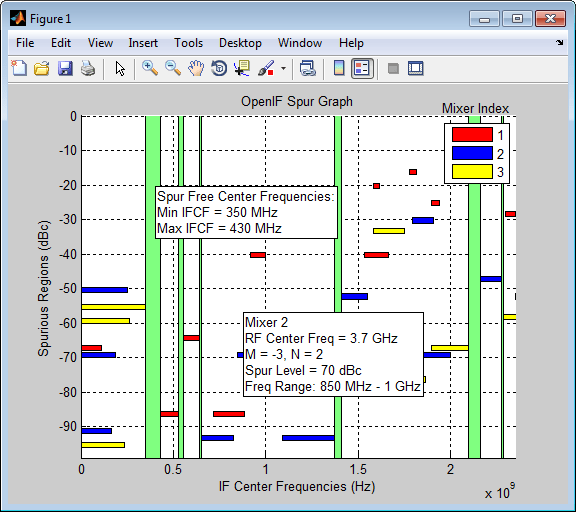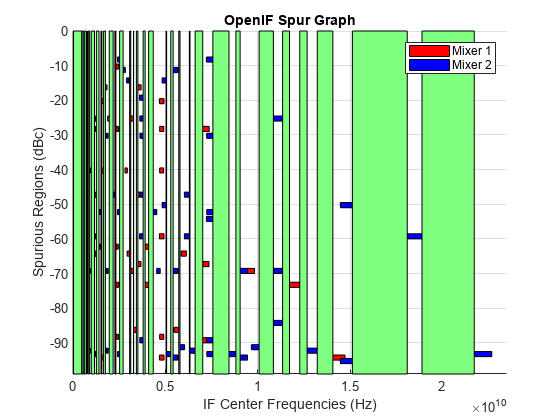show
Graphical summary of all relevant spurs and spur-free zones
Syntax
Description
show( produces a spur graph of the
hif)OpenIF
object hif. The spur graph contains:
Vertical green bands, representing spur-free zones.
Horizontal colored bands, representing spurious regions.

Spur-free zones are ranges of possible intermediate frequencies (IF) center
frequencies that are free from intermodulation distortion. Depending on the
configuration of the mixers in hif, spur-free zones may not
appear. Clicking a spur-free zone produces a tool tip, which displays information
about the spur-free zone:
Min IFCF — The minimum possible IF center frequency fIF for the corresponding spur-free zone.
Max IFCF — The maximum IF center frequency fIF for the corresponding spur-free zone.
Spurious regions contain intermodulation products from at least one mixer. The color of a spur on the spur graph indicates which mixer generates the spur, according to the legend on the spur graph. Clicking a spurious region produces a tool tip, which displays information about the spur:
RF Center Freq — The RF center frequency fRF of the mixer that generates the spur
M, N — The coefficients in the equation |MfRF – N(fRF ± fIF)| (down-conversion) or the equation |MfIF + N(fRF ± fIF)|. Injection type of the receiver determines the sign in the equations. These coefficients refer to the particular mixing product that generates the spurious region.
Spur Level — The difference in magnitude between a signal at 0 dBc and the spur. If you set
hif.SpurLevelto a number greater than this value, thenhifdoes not report the region as spurious.Freq Range — The frequency range of the spurious region. Choosing an IF center frequency in this range causes interference with the intermodulation product corresponding to the spur.
